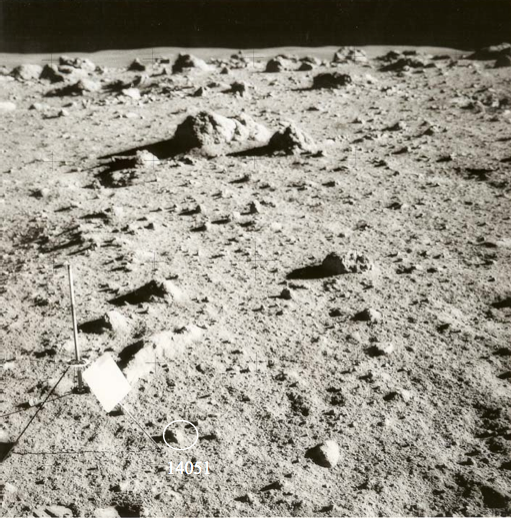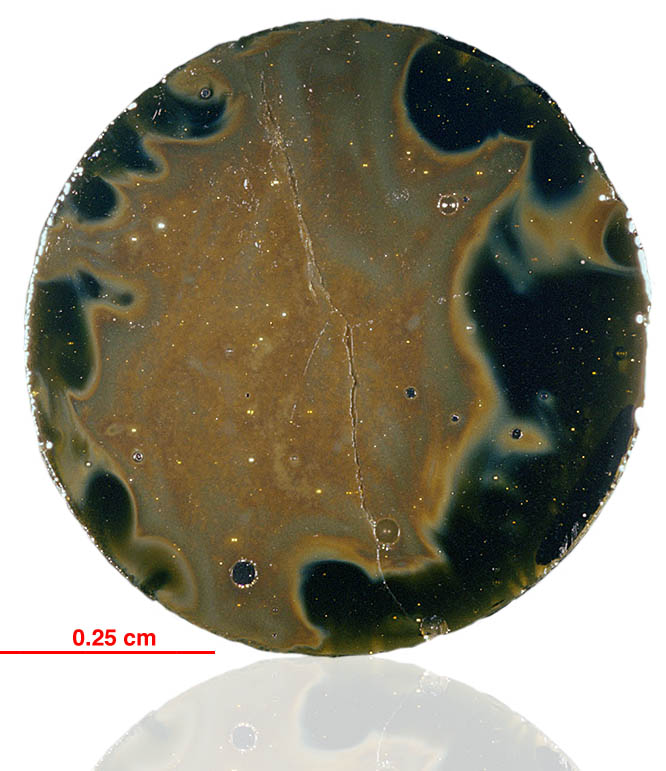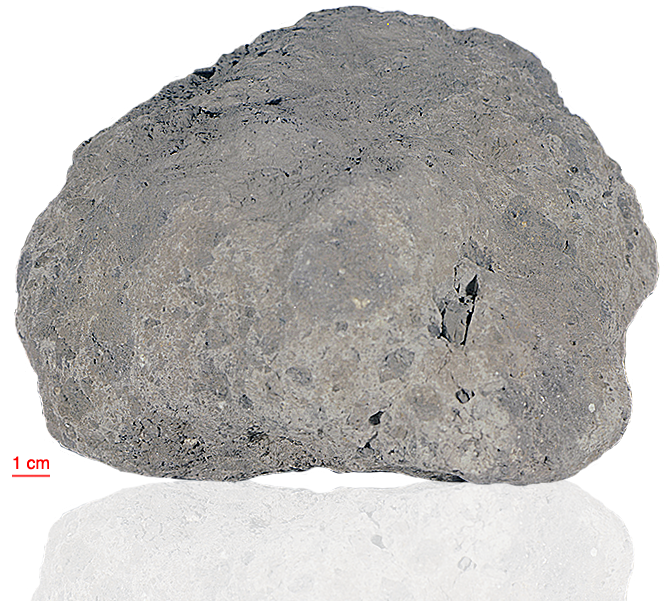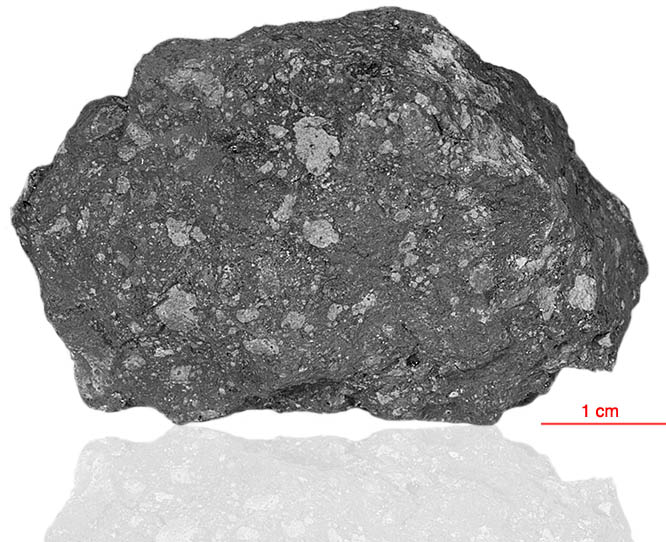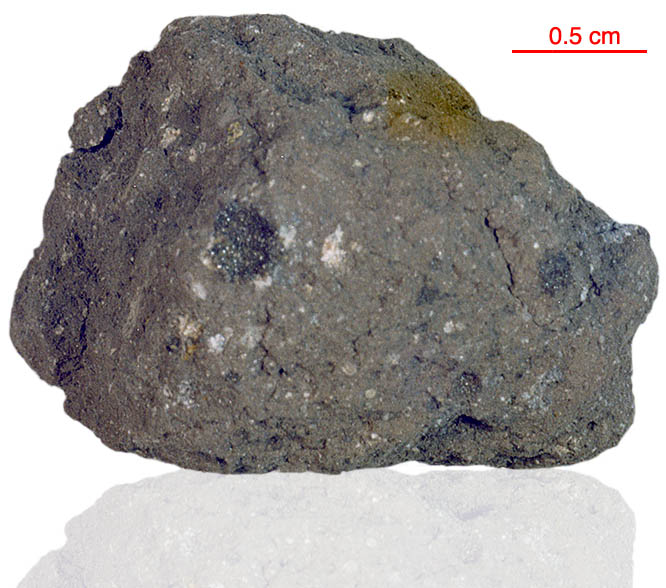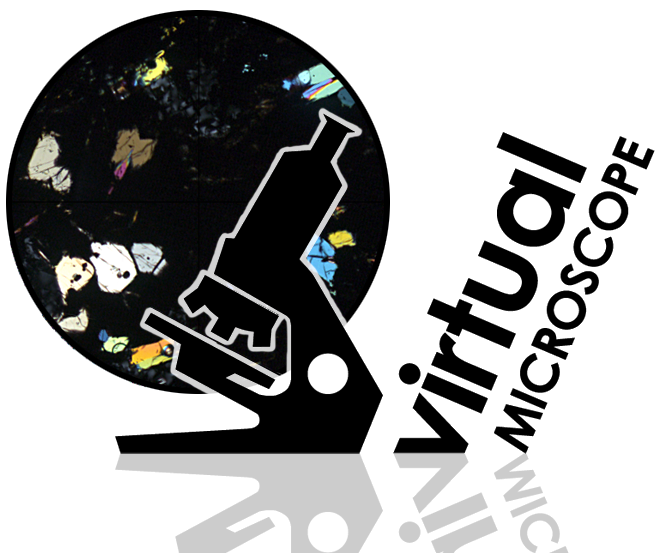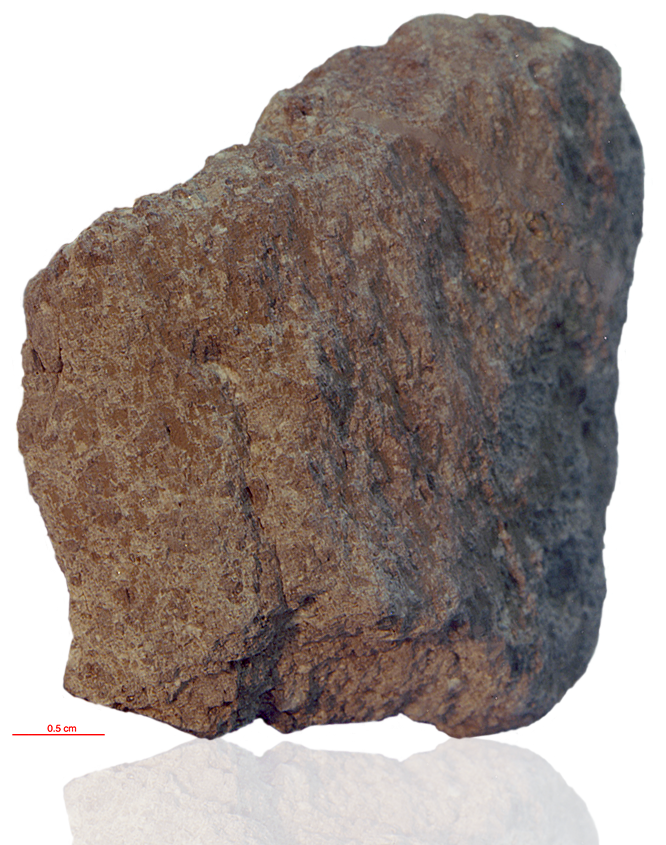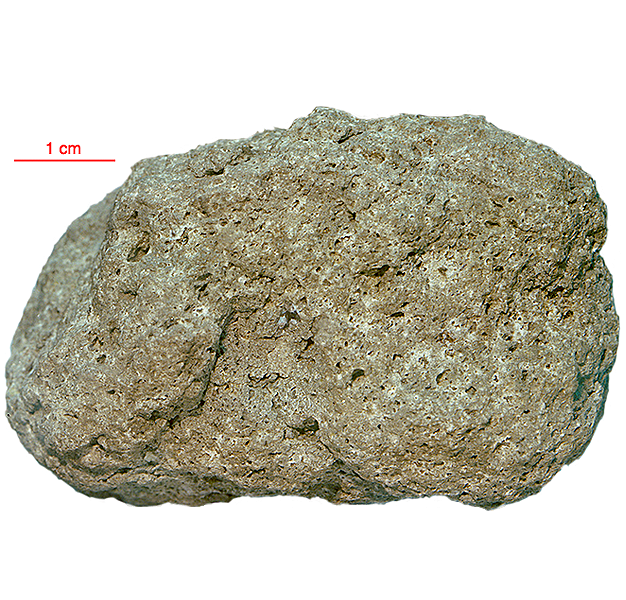
Fact sheet
14051 is an impact melt breccia. It is a coherent, fine-grained clastic rock having a small percentage of sub-rounded light and subordinate dark clasts in a medium-tan matrix. 14051 has the texture of impact melt rock similar to the large boulders at Apollo 17. The fine grain matrix has recrystallised with formation of distinct, often elongate grains of ilmenite. Both metallic iron and troilite are also relatively common (see reflected light view). The void space has consolidated into distinct, millimetre-sized vugs and vesicles. Glass fragments are uncommon.
The sample weighed 191.3 grams before analysis and is 3.71±0.05 billion years old (Ar/Ar).
Our thin section is slightly thick and in places displays plagioclase feldspar as pale yellow crystals (in XPL). Rotation 2 shows one of these crystals.
Further details of this and other Apollo samples are here: http://curator.jsc.nasa.gov/lunar/
The Apollo 14 landing site was in a region formed by impact-basin debris.
Most of the 42 kilograms of rocks and soil collected on Apollo 14 are breccias (rocks that are composed of fragments of other, older rocks). In some cases, the rock fragments that form a breccia are themselves breccias. Such rocks obviously have experienced complex histories with multiple generations of impact events. Some breccias were heated enough that some of the material in the rock was melted.
Apollo 14 was launched on 31 January 1971.
